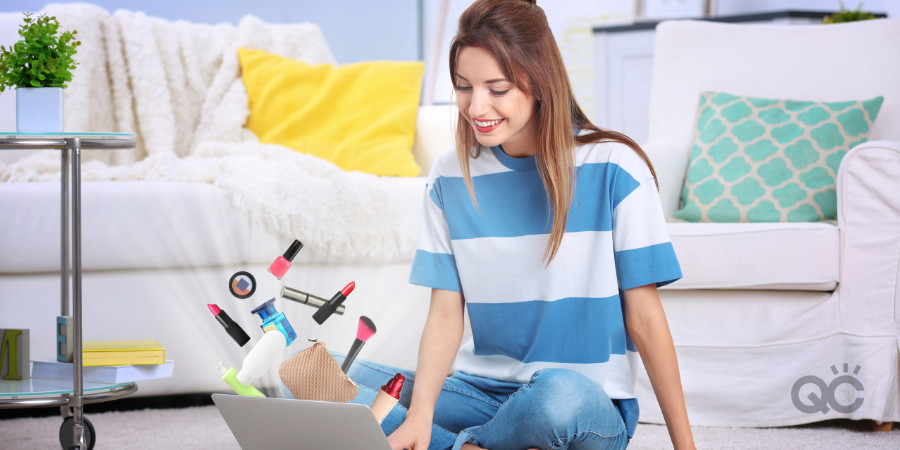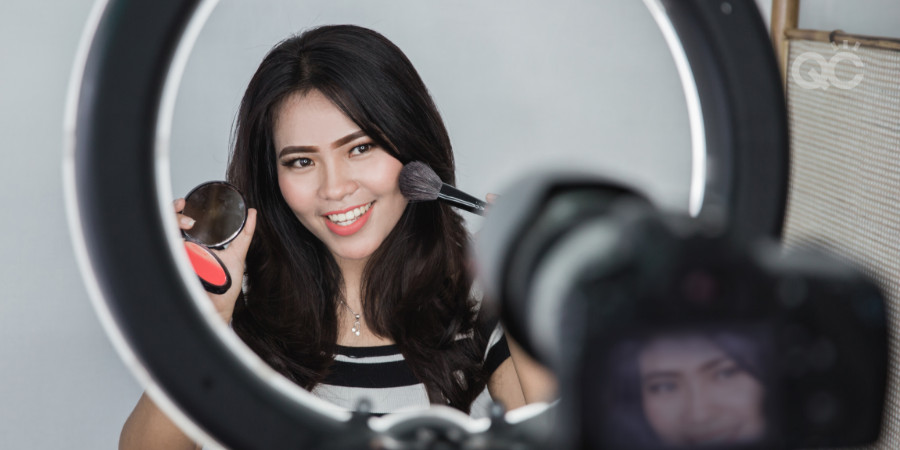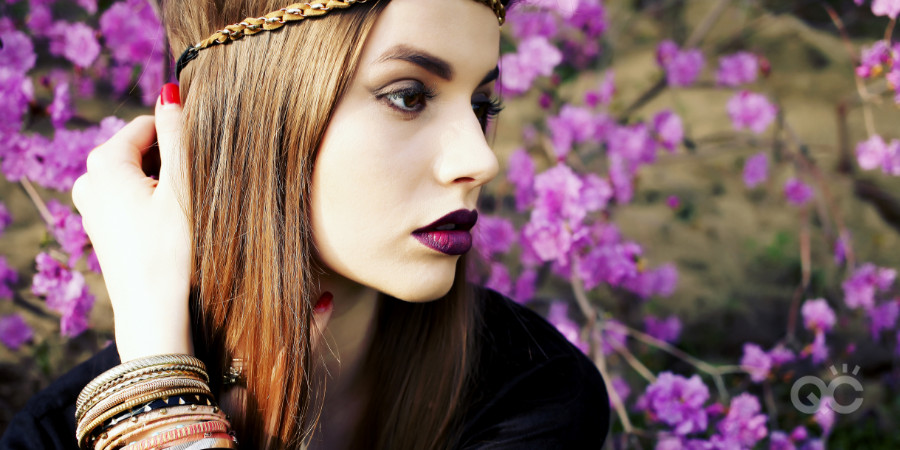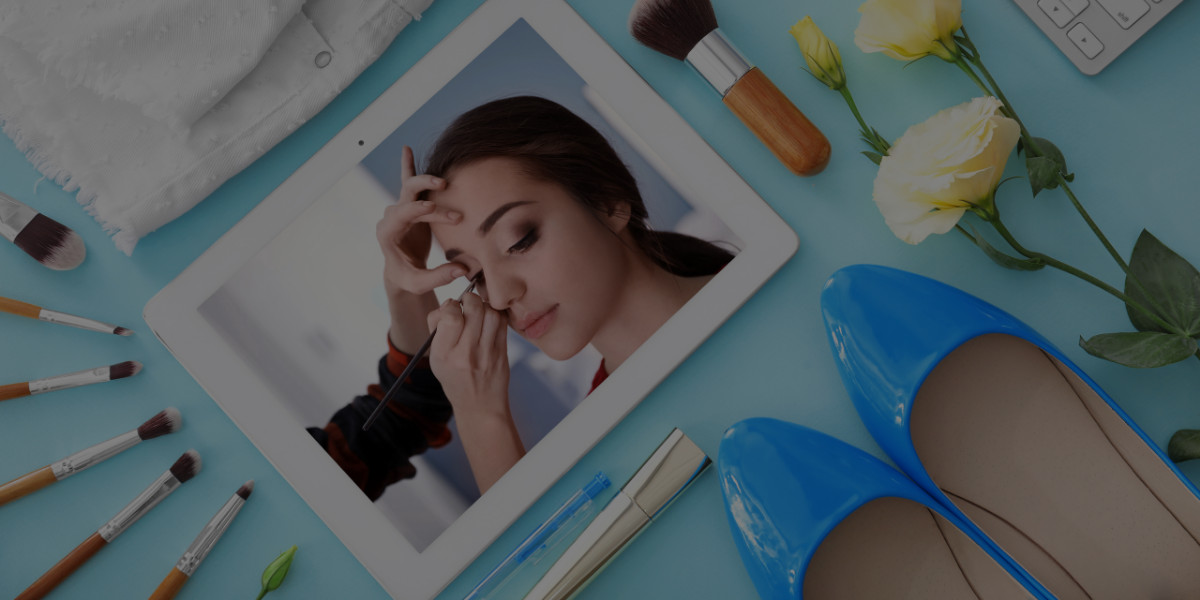YouTube’s beauty community is a huge creative hub for makeup lovers. The platform’s beauty gurus encourage people to come out of their shells and experiment with makeup. Many feel empowered and even find confidence in themselves for the first time. While it’s a great place to dip your toes into makeup and chat about your passions, it’s not the best place to learn makeup professionally.
Professional makeup and social media makeup are totally different! To the untrained viewer, it can all look the same… but there’s actually a huge difference.
Listen up! Here’s why watching YouTube tutorials isn’t the same as completing makeup classes online!
Purpose & quality of the tutorials
You probably think that online classes are basically useless in the 21st century. That they just teach you techniques you can easily learn for free from one of the hundreds of self-proclaimed makeup artists on YouTube. But that’s simply untrue! Oftentimes, gurus film tutorials for techniques that solely flatter their own features! But, that doesn’t mean a tutorial has zero merit. You’ll occasionally find some really amazing makeup artists who share their talents and tricks to the world—Lisa Eldridge, one of the world’s premiere makeup artists has a thriving channel.
But most YouTube gurus aren’t there to educate their viewers on every aspect of makeup artistry. Their tutorials are meant to draw in new subscribers to their channel. They’re eye-catching and trendy to appeal to those in love with Instagram glamour. And they might not have your career interests in mind.
Many of the platform’s top gurus create videos just to appease sponsors. And the featured products aren’t often universally flattering shades. Remember when Champagne Pop was the highlighter? Yeah, it doesn’t suit every skin type… the Opal shade in the line is actually more versatile! But you wouldn’t have known this unless you understood skin tones and color theory. Think you can get a thorough education on these concepts from YouTube videos without guided practice? Unlikely!

Comprehensive education?
Makeup tutorials on YouTube just aren’t comprehensive. They don’t teach you how to adapt your makeup for every potential client you’ll encounter in the real world. It’s difficult finding a channel that provides you with all the information you need to become a professional artist. Videos that go over eyeliner for every shape and size aren’t easy to find. And these videos aren’t the popular ones gaining tens of millions of views.
The most popular makeup videos are a paint-by-numbers type of tutorial. Want to look like Harley Quinn for Halloween? You got it! Or perhaps a glamorous Kylie Jenner look for a night out in town—there’s plenty of that online.
Here’s the thing: tutorials, for the most part, won’t teach you makeup for different…
- Skin tones
- Eye colors
- Eye shapes
- Facial structures
- Skin conditions
- Aged clients
- Male clients
- Occasions
- Digital mediums
- Professional publications
On YouTube, makeup theory isn’t discussed as thoroughly as professional artists need it to be. They don’t really go into skincare, sanitation and safety processes. These are some of the most important aspects of makeup! If you just look online to YouTube entertainers for your needs, you won’t have a good foundation for a professional career.

Makeup for the camera vs. makeup for real life
Makeup for social media isn’t what’s actually in demand in real life! Have you ever tried to follow a tutorial but found that your look just doesn’t compare? There’s a reason for that: Their makeup looks are designed for the camera!
Most YouTube gurus wear heavy, dramatic makeup where every feature is highlighted and emphasized. Their videos are also filmed under professional lights and are edited and filtered to perfection. Their picture-perfect looks lasts under studio lighting for the 30 minutes they need to film the video. It probably doesn’t perform well in natural light outside for more than an hour, though. All this on top of using expensive products that beginner makeup artists don’t have access to can be discouraging!
When you’re a professional makeup artist, the actual amount of times people will request the Kim KW look isn’t often. Most times, you’ll do bridal looks (classic) or enhanced natural looks. Even makeup for editorial shoots doesn’t resemble the Instagram makeup trend. As Nathan said in a post regarding online makeup schools vs. brick and mortar schools, YouTube MUAs teach you looks and not techniques. They teach you current trends, but the truth is, you need to learn how to create classic looks first.
Learn each technique individually. Don’t jump into recreating 3 hour full-face looks when you haven’t even gotten the basics down yet! Once you know exactly how to put different techniques together, you can add trends and get creative. Plus, when you copy looks step-by-step, you’ll only learn how to follow instructions. You don’t really get to hone in on the creative “art” in “artistry”!

Having your skills reviewed
This is where the majority of your tuition will go towards—having an actual professional makeup artist mark your work! When you take to YouTube, you’re just watching videos and attempting to copy them. At this point, you don’t have the experience to tell whether your crease shadows are blended properly!
You need an experienced professional to guide you through the basics! It’s the best way to know if your skills are up to snuff! Besides providing you with helpful critiques, there’s one other thing you need to succeed: encouragement!
Sometimes you need some love and encouragement! Think about it: When someone tells you how well you did, aren’t you motivated to keep going? You feel pride in your work. Best of all, you know that someone who knows a thing-or-two about the trade believes in you. This personal connection isn’t something you’ll receive from watching YouTube videos.

Makeup career development
When you watch tutorials, you’re probably practicing on yourself. Can you imagine pulling up a YouTube video to copy while standing in front of a model? You need to step outside your box and practice your artistry on other faces. This is the only way you can build a professional makeup career.
Besides missing practical experience, you also miss out on a career-oriented education. Building a career of makeup goes beyond mastering the art of blending. Beyond just your technical application skills, you need to master other aspects of business. Working with clients and building a portfolio are prime examples. How do you interact with clients? What looks and skills should you emphasize in your portfolio? How do you build a website? All these aspects of a career in makeup aren’t at the forefront of YouTube videos. These topics aren’t what’s going to bring in views, after all.
In a professional makeup course, you’ll learn how to achieve your career goals. Anything from working behind a makeup counter to starting your own business. YouTube gurus probably won’t provide you with business contract template and information about purchasing business insurance—but a professional online course will.
Deciding to take the plunge isn’t easy. But if you seek out a professional education, you’ll be well-equipped to take on whatever comes your way!
